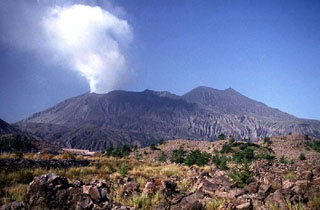Report on Aira (Japan) — 21 May-27 May 2025
Smithsonian Institution / US Geological Survey
Weekly Volcanic Activity Report, 21 May-27 May 2025
Managing Editor: Sally Sennert.
Please cite this report as:
Global Volcanism Program, 2025. Report on Aira (Japan) (Sennert, S, ed.). Weekly Volcanic Activity Report, 21 May-27 May 2025. Smithsonian Institution and US Geological Survey.
Aira
Japan
31.5772°N, 130.6589°E; summit elev. 1117 m
All times are local (unless otherwise noted)
The Japan Meteorological Agency (JMA) reported ongoing eruptive activity at Minamidake Crater (Aira Caldera’s Sakurajima volcano) during 19-28 May. The seismic network recorded 44 eruptive events and 38 explosions during 19-23 May that produced ash plumes rising up to 3 km above the crater rim and drifting N; the tallest plume followed an explosion at 1500 on 20 May. Large blocks from the explosions were ejected as far as 1.2 km from the crater rim. Sulfur dioxide emissions were extremely high, averaging 11,200 tons per day (t/d) on 20 May and 4,300 t/d on 22 May. Deformation data indicated continuing inflation. Only very small eruptive events were recorded during 26-28 May. The Alert Level remained at 3 (on a 5-level scale), and the public was warned to be cautious within 2 km of both the Minimadake and Showa craters.
Geological Summary. The Aira caldera in the northern half of Kagoshima Bay contains the post-caldera Sakurajima volcano, one of Japan's most active. Eruption of the voluminous Ito pyroclastic flow accompanied formation of the 17 x 23 km caldera about 22,000 years ago. The smaller Wakamiko caldera was formed during the early Holocene in the NE corner of the caldera, along with several post-caldera cones. The construction of Sakurajima began about 13,000 years ago on the southern rim and built an island that was joined to the Osumi Peninsula during the major explosive and effusive eruption of 1914. Activity at the Kitadake summit cone ended about 4,850 years ago, after which eruptions took place at Minamidake. Frequent eruptions since the 8th century have deposited ash on the city of Kagoshima, located across Kagoshima Bay only 8 km from the summit. The largest recorded eruption took place during 1471-76.

